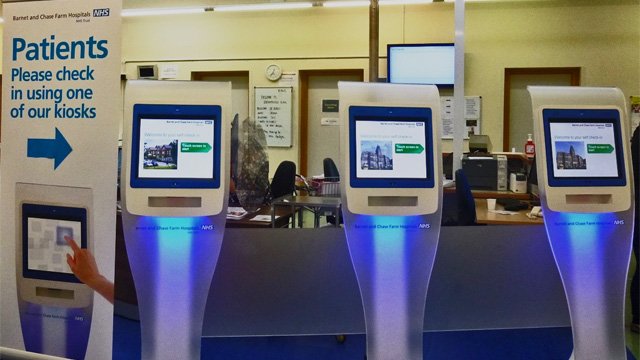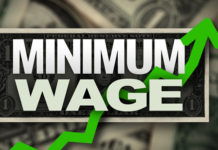If you have been to college, you have likely had a professor you disliked, but who you learned a great deal from. For me, that professor was Dr. Mark Perry. I did not like him at all, and I’m pretty sure the feeling was mutual. Whenever someone asked a question, Dr. Perry would say, “I’ll get to that later in the lecture,” and then he would go on with the lecture and never answer the question. He did that with all questions, and since I was paying to go to school myself, I felt cheated and resentful. I’m sad to say that I treated Dr. Perry accordingly.
Whatever I may have thought of Dr. Perry at the time, he was, and still is, a brilliant economist, and he ran a brilliant blog called Carpe Diem. Carpe Diem has since been rolled into the American Enterprise Institute, which is a free market think tank. The current URL is: https://www.aei.org/publication/blog/carpe-diem/ .
Dr. Perry, more than anyone else I have ever met, turned me on to economics, and there were two slides that, more than any others, peeked my interest. This first one shows the youth unemployment rate against the minimum wage, as the minimum wage increased through the 2000s. As you can see, when the minimum wage goes up, the youth unemployment rate follows.
People sometim es give me flack when I use this graph. They will say that a higher youth unemployment rate is a good thing, as it means more adults are being employed. They are wrong. Actually, the youth unemployment rate is an important measurement, as it looks at the least educated, and least skilled, among us. There are other graphs for other disadvantaged groups and they all tell the same story. A graph showing the unemployment rate of people with physical or mental disabilities, against the minimum wage, will look very similar, as will any graph showing the effect of the minimum wage on any disadvantaged demographic. You can, in fact, accurately measure how disadvantaged a group is based on the impact of the minimum wage upon it.
es give me flack when I use this graph. They will say that a higher youth unemployment rate is a good thing, as it means more adults are being employed. They are wrong. Actually, the youth unemployment rate is an important measurement, as it looks at the least educated, and least skilled, among us. There are other graphs for other disadvantaged groups and they all tell the same story. A graph showing the unemployment rate of people with physical or mental disabilities, against the minimum wage, will look very similar, as will any graph showing the effect of the minimum wage on any disadvantaged demographic. You can, in fact, accurately measure how disadvantaged a group is based on the impact of the minimum wage upon it.
The first minimum wage in recorded history was created by the Roman Emperor Trajan, around 110 AD. The reason behind the first minimum wage is well recorded: non-Romans were migrating to Rome, and, being willing to work for a little less than were Romans, non-Romans were displacing Roman citizens in the workforce. The Romans did not like being displaced, and their answer was to protect Romans from the disadvantaged groups migrating to Rome in search of better lives, by removing the incentive to hire those groups; they created a minimum wage.
In 1933, African Americans were migrating North in large numbers, and were taking jobs from white Americans by offering to work for a little less money. At the time, the African American unemployment rate was lower than the unemployment rate of white Americans, and the African American workforce participation rate was higher than that of white Americans. There was a wage gap (African Americans making less money for the same work), but it was closing, and somewhat rapidly. Roosevelt then, in 1933, to appease white voters who were afraid of being displaced by African Americans, created the first national minimum wage, removing the profit incentive to hire African Americans first. The African American unemployment rate has been significantly higher than that for white Americans ever since.
We have well over 2,000 years of data on minimum wages, and it turns out that even the most racist business person will generally put profit ahead of racism such that, if they can make more money hiring a disadvantaged group, they will hire the disadvantaged group first. This causes a backlash against the disadvantaged group in the general population – which then demands a minimum wage to suppress the disadvantaged group.
 This second graph, which I also originally saw in Dr. Perry’s class, is a little more nuanced. It shows not only the effect of the minimum wage on youth unemployment, but also the trend lines. As you can see, whenever the minimum wage is raised, the youth unemployment rate trends up, and as inflation reduces the minimum wage in real terms (the dollar over time being worth less), the youth unemployment line trends down.
This second graph, which I also originally saw in Dr. Perry’s class, is a little more nuanced. It shows not only the effect of the minimum wage on youth unemployment, but also the trend lines. As you can see, whenever the minimum wage is raised, the youth unemployment rate trends up, and as inflation reduces the minimum wage in real terms (the dollar over time being worth less), the youth unemployment line trends down.
The data could not be more clear: whatever group would be the last hired without a minimum wage is the first group to lose jobs because of the minimum wage. In other words, the minimum wage hurts the very people the public is told the minimum wage is supposed to help, and it does this by subsidizing discrimination against those people.
The minimum wage has also been used to subsidize discrimination against women, and other minorities, too. The minimum wage harms whatever groups are at a disadvantage, and it has been doing that wherever it has been used, for well over 2,000 years.
The minimum wage is racist, sexist, and every other ‘ist’ it could possibly be.
The minimum wage is evil.
Of course, that does not mean that all of the people who support the minimum wage are evil. It means only that, because they do not understand the economics behind the minimum wage, they are ignorant of its true effect. Luckily, there is an alternative. Milton Friedman called it the ‘Negative Income Tax’, and it should be adopted as a replacement for the minimum wage.
Under Milton Friedman’s plan, we would draw a line – say at $40,000 – and would subtract half of what someone makes from that amount. We would then give them half the difference.
As an illustration, someone making $7 an hour and working full time will earn almost exactly $15,000 per year (we’ll round to $15,000 to keep the math simple). If we subtract $15,000 from our line at $40,000 we get $25,000. We give this worker half of that, or $12,500. Since they earned $15,000 in the private economy, they take home $27,500 ($15,000 + $12,500). A family of four with two working parents would earn $55,000 at just $7 per hour, and would be out of poverty.
The IRS gives us the bureaucracy to run this program, and it would allow us to augment wages every time a worker is paid – just as we already do for those who pay federal income taxes. Better yet, under this program disadvantaged groups would be hired first rather than last, making this a program that would actually help people.
So why don’t we do it?
I’ll tell you why: because there is another class of advantaged workers in our country today, who have a vested interest in keeping as many people as possible out of the workforce. For this group, the minimum wage is a godsend, allowing them to artificially increase their wages above where they would otherwise be. You may have guessed who this group is, but just in case you have not, I’ll tell you: unions. Unions benefit a great deal from any and all programs that keep people out of the workforce, and so they push for ever more generous welfare benefits, and ever higher minimum wages. Unlike the typical ‘do good’ minimum wage supporter, those running unions really are evil, as they promote programs that hurt millions of Americans, all for their own self interest.
Unions even rig ‘studies’ to support the minimum wage, doing things like looking at the effect of the minimum wage six months after it takes effect. Obviously, when the wage first goes up (particularly if the hike is unexpected), employers have little choice but to pay more. The negative effects on employment take longer than six months to occur, and unions know that, so they only look out six months. Sometimes they will commission surveys done just before a minimum wage hike, and again after the hike, to compare hiring levels between the two periods. Since none of the employers that went out of business, or moved, in response to the minimum wage are around to take the second survey, the results are misleading – which is why unions like this technique. Unions do not ‘study’ the minimum wage; they propagandize it.
Fighting to replace the minimum wage with a program that works, should be one of the moral imperatives of our time. We live in the richest country on Earth, and we want t there to be a minimum level of subsistence below which no worker need fall. Of course we want that. But we need to be smart, using programs that work rather than programs that harm the very people who need our help. It is time to call out the minimum wage for what it really is, and once and for all, to reject it.


























[…] There are other associated articles that delve into particular ways we might help others. For an overview of all the harm the War on Poverty has caused, you may enjoy reading American Apartheid. For an overview on the difference between ‘doing good,’ and ‘feeling good,’ you might enjoy Democrats, Republicans, and Hate for the Poor. For an overview of the Minimum Wage (and how best to replace it), you might enjoy The Case Against the Minimum Wage. […]
[…] a conservative, I am picking on liberal proposals, and I could continue to do so all day. Minimum wages cause great harm, as has the War on Poverty. The list is endless. I could just as easily pick on conservative ideas. […]
[…] a conservative, I am picking on liberal proposals, and I could continue to do so all day. Minimum wages cause great harm, as has the War on Poverty. The list is endless. I could just as easily pick on conservative ideas. […]
[…] replace the minimum wage, and welfare programs, with Milton Friedman’s Negative Income Tax (outlined here). Another might be to improve the quality of education in our inner cites, such as through […]
[…] are interested in reading about other, better ways to accomplish the same goal, I urge you to read The Case Against the Minimum Wage. With better solutions available, why does the left only want to discuss minimum wages? Again […]